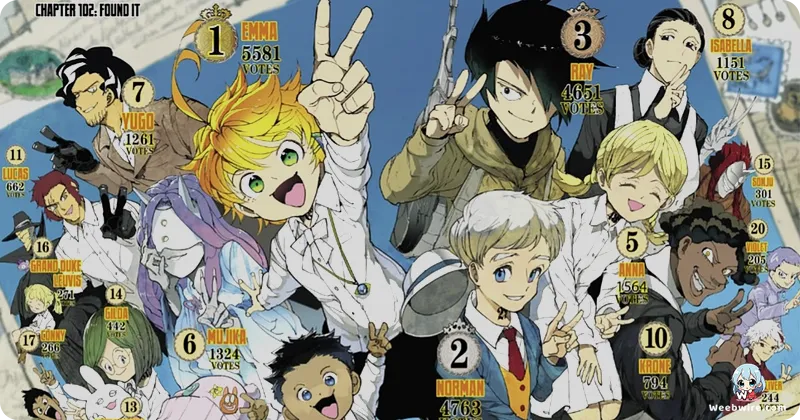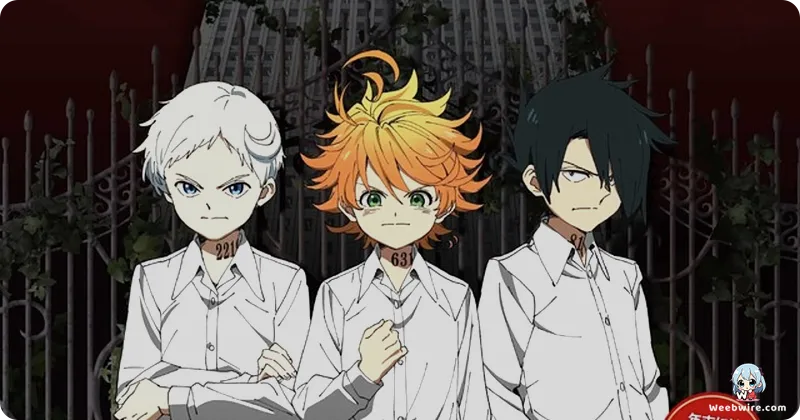Unmasking Grace Field: The Untold Stories and Creative Genius Behind 'The Promised Neverland'

Since its electrifying debut, The Promised Neverland has captivated global audiences, masterfully blending psychological thriller elements with heartwarming bonds against a chilling backdrop. Animated by CloverWorks, this critically acclaimed series brought to life the manga by Kaiu Shirai and Posuka Demizu, unveiling a world where an orphanage's innocent facade conceals a terrifying truth. Beyond Emma, Norman, and Ray's desperate struggle for freedom, numerous intriguing facts and creative decisions shaped this dark fantasy masterpiece, revealing meticulous thought and clever nuances often overlooked.
Original Concept Evolution
A surprising revelation lies in its original concept: Kaiu Shirai first envisioned a traditional fantasy of a hero battling monsters. It was through extensive brainstorming and an editor's suggestion that the groundbreaking idea of children escaping a sinister orphanage took shape. This pivotal shift showcases Shirai's adaptability, ultimately defining the series' distinctive identity.
Meaningful Character Names
Character names themselves hold subtle, significant meanings. Emma, associated with warmth and hope, perfectly encapsulates her optimistic, compassionate nature. Norman, from 'Northman' or 'lawman,' suggests keen intellect and strategic mind. Ray, interpreted as 'light' or 'advisor,' reflects his role as a knowledgeable, loyal guide. These choices enrich portrayals and foreshadow destinies.
Isabella's Complex Portrayal
The antagonist, Isabella, 'Mama' of Grace Field House, is brimming with complexity and a tragic backstory. Her past reveals a young girl, like Emma, who once dreamed of freedom. Forced into servitude, Isabella embodies their world's heartbreaking cycle. Her unwavering dedication, despite emotional toll, makes her a deeply sympathetic villain, highlighting survival's moral ambiguities.

Posuka Demizu's Distinctive Art Style
Posuka Demizu's distinctive art style, blending charming designs with unsettling imagery, is crucial to the series' unique atmosphere. Her masterful rendering of expressions, particularly children's faces in fear or determination, creates visceral impact. CloverWorks' animation successfully translated this, using dynamic camera angles and intense close-ups to heighten suspense.
Intricate Symbolism
Symbolism is intricately woven throughout: numbers on necks chillingly remind of their 'livestock' fate. Flowers carry melancholic undertones. Grace Field House, idyllic yet with imposing walls, symbolizes their gilded cage. These subtle visual cues enhance the narrative, inviting deeper contemplation.
Positive Fan Reception
Fan reception, especially for the first season's 'Grace Field House' arc, was overwhelmingly positive. The anime's ability to capture the manga's tension, emotional intensity, and strategic brilliance garnered widespread praise. Active community discussions solidified its place as a significant title.
Ultimately, The Promised Neverland is more than an escape story; it's a profound exploration of freedom, family, sacrifice, and the indomitable human spirit. Its groundbreaking premise, character depth, symbolic richness, and creative journey contribute to its enduring appeal, making it a truly fascinating piece of storytelling.
Credits
The Promised Neverland
Author
Kaiu Shirai
Cover Art
Posuka Demizu
Studio
CloverWorks
Publisher
Shueisha
Producers





